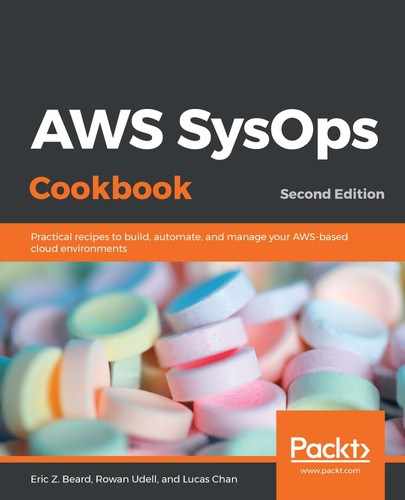CloudFormation templates consist of a number of parts, but these are the four we're going to concentrate on:
- Parameters
- Resources
- Outputs
- Mappings
Here's a short YAML example:
AWSTemplateFormatVersion: '2010-09-09'
Parameters:
EC2KeyName:
Type: String
Description: EC2 Key Pair to launch with
Mappings:
RegionMap:
us-east-1:
AMIID: ami-9be6f38c
ap-southeast-2:
AMIID: ami-28cff44b
We declare a parameter and mappings to start the template. Mappings will be covered in Chapter 10, Advanced AWS CloudFormation. Next, we define Resources:
Resources:
ExampleEC2Instance:
Type: AWS:EC2::Instance
Properties:
InstanceType: t2.nano
UserData:
Fn::Base64:
Fn::Sub': |
#!/bin/bash -ex
/opt/aws/bin/cfn-signal '${ExampleWaitHandle}'
ImageId:
Fn::FindInMap: [ RegionMap, Ref: 'AWS::Region', AMIID ]
KeyName:
Ref: EC2KeyName
Then, in the final section of the template, we define WaitHandle, WaitCondition, and Outputs:
ExampleWaitHandle:
Type: AWS::CloudFormation::WaitConditionHandle
Properties:
ExampleWaitCondition:
Type: AWS::CloudFormation::WaitCondition
DependsOn: ExampleEC2Instance
Properties:
Handle:
Ref: ExampleWaitHandle
Timeout: 600
Outputs:
ExampleOutput:
Value:
Fn::GetAtt: ExampleWaitCondition.Data
Description: The data signaled with the WaitCondition
Outputs give you a way to see things such as auto-generated names, and, in this case, the data from the wait condition.
